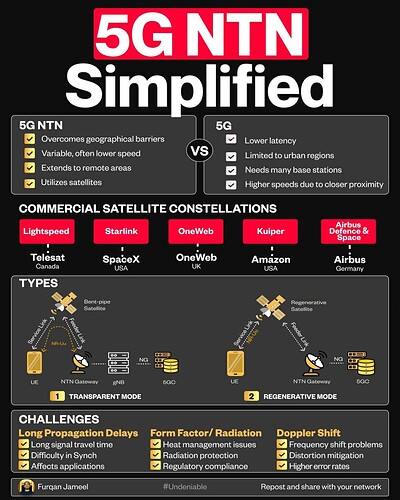5G didn’t fail us. But it left some areas behind.
With NTN, we get to fix that.
It’s not a tech issue.
It’s a coverage issue.
That’s where 5G NTN steps in.
NTN stands for Non-Terrestrial Networks.
Instead of towers, it uses satellites.
Sounds ambitious?
It is.
But here’s what changes:
![]() Signals reach disaster zones.
Signals reach disaster zones.
![]() Remote villages finally get internet.
Remote villages finally get internet.
![]() Small rural businesses can go global.
Small rural businesses can go global.
![]() IoT devices stay connected anywhere.
IoT devices stay connected anywhere.
![]() Speed isn’t limited to urban life.
Speed isn’t limited to urban life.
Traditional 5G struggles when nature gets in the way.
Oceans don’t carry signals.
Mountains block them.
Towers just can’t cover it all.
5G NTN rewrites that rule.
It offers real global coverage.
No gaps. No dead zones.
How does it work?
![]() LEO satellites shrink latency.
LEO satellites shrink latency.
![]() Beamforming focuses signals where they’re needed.
Beamforming focuses signals where they’re needed.
![]() MEC (Mobile Edge Computing) brings the cloud closer to users.
MEC (Mobile Edge Computing) brings the cloud closer to users.
Of course, it’s not perfect yet.
![]() Launching satellites isn’t cheap.
Launching satellites isn’t cheap.
![]() International laws need catching up.
International laws need catching up.
![]() Power demands are still high.
Power demands are still high.
But none of that is a dealbreaker.
If anything, these are engineering problems.
And those have solutions.
What matters is the intent.
To connect the unconnected.
5G NTN isn’t just about coverage.
It’s about fairness.
It’s about access.
Thanks for reading.
LinkedIn: ![]()
